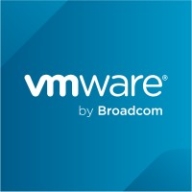

Datadog and VMware Aria Operations for Applications compete in the application performance monitoring space. Datadog holds an advantage due to its flexibility and broad ecosystem integrations.
Features: Datadog's most notable features include its extensive integrations, AI-driven alerts, and intuitive dashboards. It simplifies monitoring with its hosted nature, avoiding infrastructure management. VMware Aria Operations for Applications offers real-time statistics, virtual machine-centric alert setups, and features tailored for VM environments.
Room for Improvement: Datadog users suggest improvements in API consistency, pricing clarity, and enhancement of certain features. VMware Aria Operations for Applications could benefit from improved customer support response times, deeper insights, and user experience enhancements.
Ease of Deployment and Customer Service: Datadog is versatile in deployment across various cloud environments and offers excellent documentation and proactive support. VMware Aria Operations is compatible mainly with on-premises and hybrid setups and has reliable customer support, though slightly slower in response.
Pricing and ROI: Datadog has flexible but potentially complex pricing, often leading to unexpected costs, yet it offers a strong ROI with its alerting and debugging capabilities. VMware Aria Operations has higher initial costs due to its integration needs, but it consolidates features effectively, making it cost-effective despite steep licensing.
| Product | Market Share (%) |
|---|---|
| Datadog | 8.5% |
| VMware Aria Operations for Applications | 1.9% |
| Other | 89.6% |


| Company Size | Count |
|---|---|
| Small Business | 78 |
| Midsize Enterprise | 42 |
| Large Enterprise | 82 |
| Company Size | Count |
|---|---|
| Small Business | 4 |
| Midsize Enterprise | 1 |
| Large Enterprise | 10 |
Datadog integrates extensive monitoring solutions with features like customizable dashboards and real-time alerting, supporting efficient system management. Its seamless integration capabilities with tools like AWS and Slack make it a critical part of cloud infrastructure monitoring.
Datadog offers centralized logging and monitoring, making troubleshooting fast and efficient. It facilitates performance tracking in cloud environments such as AWS and Azure, utilizing tools like EC2 and APM for service management. Custom metrics and alerts improve the ability to respond to issues swiftly, while real-time tools enhance system responsiveness. However, users express the need for improved query performance, a more intuitive UI, and increased integration capabilities. Concerns about the pricing model's complexity have led to calls for greater transparency and control, and additional advanced customization options are sought. Datadog's implementation requires attention to these aspects, with enhanced documentation and onboarding recommended to reduce the learning curve.
What are Datadog's Key Features?In industries like finance and technology, Datadog is implemented for its monitoring capabilities across cloud architectures. Its ability to aggregate logs and provide a unified view enhances reliability in environments demanding high performance. By leveraging real-time insights and integration with platforms like AWS and Azure, organizations in these sectors efficiently manage their cloud infrastructures, ensuring optimal performance and proactive issue resolution.
VMware Tanzu Observability by Wavefront is a powerful tool for monitoring and analyzing the performance and availability of applications and infrastructure in real-time.
With its comprehensive monitoring capabilities, visualizing and analyzing data becomes effortless. The real-time alerting system ensures timely issue resolution, while scalability and a user-friendly interface provide a seamless experience for smooth operations.
We monitor all Cloud Monitoring Software reviews to prevent fraudulent reviews and keep review quality high. We do not post reviews by company employees or direct competitors. We validate each review for authenticity via cross-reference with LinkedIn, and personal follow-up with the reviewer when necessary.